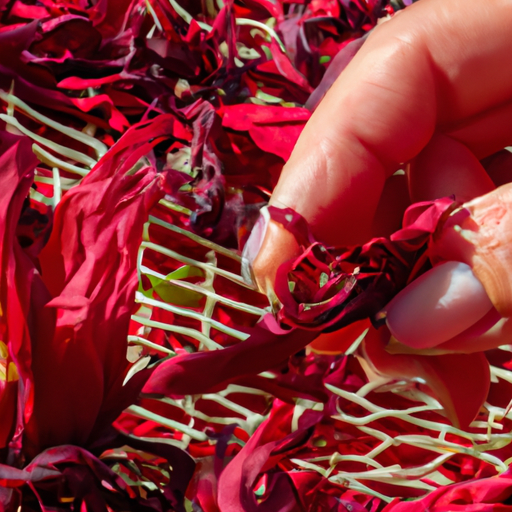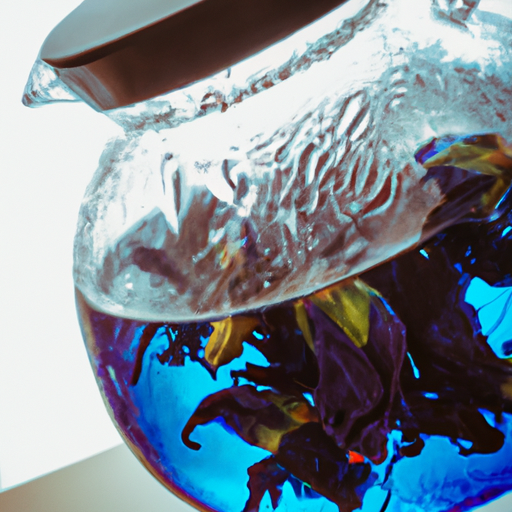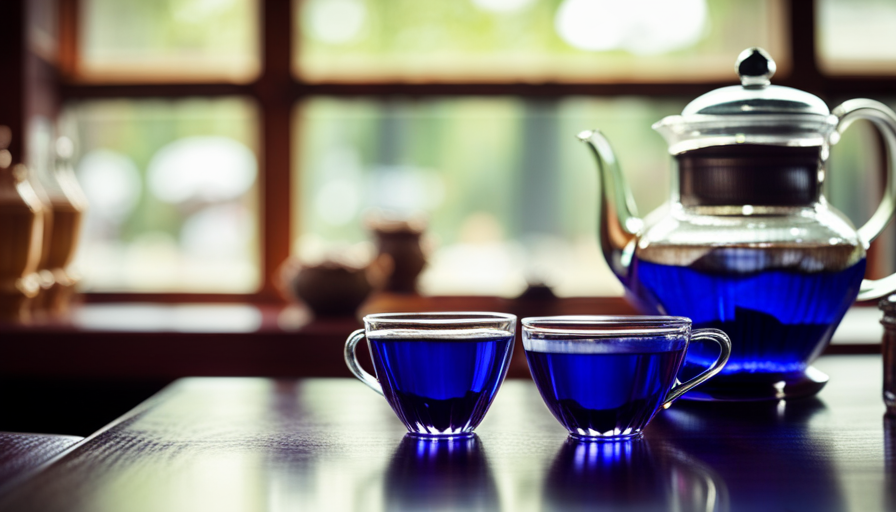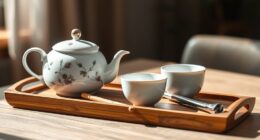Hey there! Have you ever wondered how to harness the vibrant flavors and health benefits of hibiscus in your very own cup of tea? Well, buckle up because I’m about to spill the tea on drying hibiscus flowers for a sensational brew.
Picture this: your kitchen transformed into a fragrant oasis as you embark on a journey to create a truly unique and invigorating tea blend. With my trusty techniques and insider knowledge, you’ll be sipping on a steaming cup of hibiscus goodness in no time.
In this guide, I’ll walk you through the process of choosing and harvesting fresh hibiscus flowers, preparing them for drying, and preserving their vibrant color and flavor. We’ll explore two drying methods – air drying and oven drying – to ensure your flowers are perfectly preserved.
Once you’ve got your dried hibiscus flowers on hand, I’ll show you how to brew a delightful cup of hibiscus tea and even add some exciting flavor variations to keep things interesting. So grab your gardening gloves and let’s get started on this floral adventure together!
Key Takeaways
- Hibiscus flowers should be harvested in the morning to preserve their freshness and prevent wilting.
- There are different methods for drying hibiscus flowers, including using a dehydrator, air drying, oven drying, and sun drying.
- Dried hibiscus flowers should be stored in an airtight container away from light and moisture.
- To make hibiscus tea, dried flowers should be crushed and simmered in boiling water for 10 minutes before straining.
Introduction to Hibiscus Tea and Its Benefits
Discover the incredible benefits of hibiscus tea for your well-being and indulge yourself in its refreshing and rejuvenating properties.
Hibiscus tea is a herbal infusion made from the dried petals of the hibiscus flower. It has been consumed for centuries due to its numerous health benefits.
First and foremost, hibiscus tea is known for its ability to lower blood pressure. Studies have shown that regular consumption of hibiscus tea can help reduce both systolic and diastolic blood pressure. This is due to the presence of bioactive compounds called anthocyanins, which have been found to have anti-hypertensive properties. Additionally, hibiscus tea is rich in antioxidants, which help protect the body against oxidative stress and inflammation.
There are several types of hibiscus tea available in the market. The most common is made from the Hibiscus sabdariffa plant, which is native to Africa and is known for its tart and tangy flavor. There are also varieties made from other hibiscus species, such as Hibiscus rosa-sinensis, which is known for its sweeter taste.
Now that we understand the health benefits of hibiscus tea and the different types available, let’s move on to the next section about choosing and harvesting fresh hibiscus flowers.
Choosing and Harvesting Fresh Hibiscus Flowers
First, you’ll want to pluck the vibrant, crimson blossoms at their peak, when they’re as fresh as a daisy, to ensure the most flavorful brew for your cuppa.
Harvesting techniques for hibiscus flowers require a delicate touch to preserve their delicate petals and potent flavors. Here are some key points to keep in mind when choosing and harvesting fresh hibiscus flowers:
-
Selecting the right flowers: Look for blossoms that are fully opened and free from blemishes or discoloration. These flowers should have a vibrant red color, indicating their maturity and rich flavor.
-
Handling the flowers: Gently grasp the stem near the base of the flower and give it a slight twist to detach it from the plant. Avoid pulling or tugging forcefully, as this can damage the petals and affect the taste of the tea.
-
Timing is crucial: Harvest the flowers early in the morning when the temperature is cooler. This helps to preserve their freshness and prevent wilting.
Harvesting fresh hibiscus flowers is just the first step towards preparing them for drying. After plucking the blossoms, it’s essential to follow proper techniques to ensure optimal drying and preservation of their flavors.
Preparing the Flowers for Drying
To get started, you’ll want to make sure the freshly plucked hibiscus blossoms are properly prepared for the drying process. This will ensure that you achieve the best results when making hibiscus tea. There are a few preparation techniques that can help enhance the flavor and aroma of the dried flowers.
First, gently rinse the flowers under cool water to remove any dirt or debris. Then, pat them dry with a clean towel. Next, remove the sepals and the pistil from each blossom, as they can add bitterness to the tea. This can easily be done by using a pair of kitchen scissors or a sharp knife.
After preparing the flowers, it’s time to dry them. I recommend using a dehydrator, as it provides consistent temperature and airflow, resulting in a faster and more efficient drying process. Set the dehydrator to the lowest temperature setting and place the prepared hibiscus flowers on the trays. The optimal drying time is around 4-6 hours, depending on the humidity level.
Once the flowers are fully dried, they should be crisp to the touch. If they still feel slightly soft or pliable, they need more time to dry. Once dried, store the hibiscus flowers in an airtight container away from light and moisture to maintain their freshness.
Now that the flowers are prepared, it’s time to move on to the next step: the air drying method. This traditional method requires patience but yields excellent results.
Air Drying Method
Now let’s dive into the air drying method, which is a more traditional approach that requires a little extra patience but can lead to fantastic results.
When it comes to drying hibiscus flowers for tea, the air drying method has its own set of benefits. Firstly, it’s a natural and gentle way to remove moisture from the flowers, preserving their vibrant colors and delicate flavors. Unlike other drying methods, air drying allows the flowers to maintain their natural essence, resulting in a more authentic tea experience.
To begin the air drying process, start by harvesting fresh hibiscus flowers. Remove any damaged or discolored petals and discard them. Next, tie a small bundle of flowers together using a string or rubber band. Hang the bundle upside down in a well-ventilated area, away from direct sunlight. Make sure the area is dry and free from any moisture, as this can cause mold to develop on the flowers.
Allow the flowers to hang for approximately two weeks, or until they’re completely dry and crispy to the touch. This duration may vary depending on the humidity levels in your area. Once the flowers are fully dried, gently remove the petals from the stems and store them in an airtight container.
Now that we’ve covered the air drying method, let’s move on to the next section about the oven drying method.
Oven Drying Method
If you’re craving a quicker method for preserving the vibrant colors and delicate flavors of hibiscus flowers, the oven drying method is the way to go. This method allows for precise control over the drying process, ensuring that the flowers retain their qualities while being dried efficiently.
To begin the oven drying method, preheat your oven to a low temperature setting, around 150°F (65°C). This gentle heat will slowly remove the moisture from the flowers without damaging their natural characteristics. Spread the hibiscus flowers evenly on a baking sheet, making sure there’s enough space between them for proper airflow. Place the baking sheet in the oven and let the flowers dry for about 2 to 3 hours.
During the drying process, periodically check the flowers for dryness. They should feel crisp and crumbly to the touch when fully dried. If they still feel slightly soft, continue drying them for another 30 minutes to an hour. Once they’re completely dry, remove the baking sheet from the oven and let the flowers cool before storing them in an airtight container.
Now that you’ve learned about the oven drying method, let’s move on to the next section about the sun drying method.
Sun Drying Method
For a more natural and hands-off approach to preserving the vibrant colors and delicate flavors of hibiscus flowers, you’ll love the sun drying method. Sun drying is a traditional technique that has been used for centuries to dry various types of flowers and herbs.
To sun dry hibiscus flowers, start by harvesting the blooms in the morning when they’re fully open. Remove any excess moisture by gently shaking the flowers or patting them dry with a clean cloth.
Next, lay the flowers in a single layer on a clean and dry surface, preferably a mesh tray or a baking sheet lined with parchment paper. Place the tray in an area with direct sunlight and good air circulation. Allow the flowers to dry for about 2 to 3 days, turning them occasionally to ensure even drying.
The sun drying method offers several benefits, including preserving the natural colors and flavors of the flowers, as well as allowing them to retain their nutritional value.
Once the hibiscus flowers are fully dried, you can move on to the next step of storing and preserving them without compromising their quality.
Storing and Preserving Dried Hibiscus Flowers
To maintain the magnificent flavors and vibrant hues of your sun-dried hibiscus, it’s crucial to properly pack them in airtight containers. Storing dried hibiscus flowers requires careful consideration to ensure their longevity and quality.
First, choose glass or plastic containers with tight-fitting lids to prevent moisture and air from entering. These containers should be clean and dry before use.
Next, place the dried flowers in the containers, making sure to leave some room for expansion. It’s best to store them in a cool, dark place, away from direct sunlight and heat, as these can cause flavor and color deterioration.
Additionally, avoid storing them near strong-smelling substances, as hibiscus easily absorbs odors. When stored properly, dried hibiscus flowers can maintain their flavor and vibrant colors for up to a year.
Aside from their delicious taste, dried hibiscus flowers also offer numerous health benefits. Packed with antioxidants, they can help fight inflammation and lower blood pressure. They’re also rich in vitamin C, which supports a healthy immune system.
Furthermore, hibiscus tea is known for its potential to aid in weight loss and promote liver health. So, by storing your dried hibiscus flowers correctly, you can enjoy not only their amazing flavors but also their health-boosting properties.
Now, let’s move on to the next section and learn how to brew hibiscus tea from these dried flowers.
Brewing Hibiscus Tea from Dried Flowers
Let’s delve into the process of steeping these vibrant sun-drenched petals, transforming them into a refreshing and invigorating beverage.
The brewing process for hibiscus tea from dried flowers is quite straightforward. First, gather a handful of dried hibiscus flowers and crush them lightly to release their flavor. Next, bring a pot of water to a boil and add the crushed flowers. Allow the mixture to simmer for about 10 minutes, ensuring that the water doesn’t reach a rolling boil. This gentle simmering will allow the flowers to infuse their vibrant color and tangy flavor into the water.
Once the simmering is complete, strain the liquid to remove any remaining flower bits. The resulting tea will have a deep red hue and a tart, fruity taste.
Apart from its delightful flavor, hibiscus tea offers numerous health benefits. It’s rich in antioxidants, which help fight inflammation and protect against chronic diseases. This tea is also known to support heart health by reducing blood pressure and cholesterol levels.
Transitioning into the subsequent section about adding flavor and variations to your hibiscus tea, we can explore different ways to enhance the taste and experience of this delightful beverage.
Adding Flavor and Variations to Your Hibiscus Tea
Explore the endless possibilities of enhancing your hibiscus infusion with tantalizing flavors and creative variations. Adding different flavors to your hibiscus tea not only elevates the taste but also provides numerous health benefits. There are several flavoring options you can experiment with to create a unique and refreshing cup of hibiscus tea.
To add depth and complexity to your tea, consider incorporating ingredients such as ginger, mint, lemon, or honey. These additions not only complement the tartness of the hibiscus flower but also bring their own distinctive flavors to the mix. For a soothing and warming cup of tea, add a slice of fresh ginger or a sprig of mint. If you prefer a more citrusy taste, squeeze some lemon juice into your tea. And for those with a sweet tooth, a drizzle of honey can do wonders.
Here is a table that showcases some flavoring options and their benefits:
| Flavoring Option | Health Benefits |
|---|---|
| Ginger | Aids digestion and reduces inflammation |
| Mint | Refreshing and promotes digestion |
| Lemon | Rich in vitamin C and boosts immunity |
| Honey | Natural sweetener with antioxidant properties |
By exploring these flavoring options, you can create a personalized hibiscus tea that suits your taste preferences and offers various health benefits. Next, we will delve into ‘enjoying the fruits of your labor: tips and recipes’ to discover how to make the most of your flavorful hibiscus infusion.
Enjoying the Fruits of Your Labor: Tips and Recipes
Indulge in the delightful rewards of your efforts by discovering tips and recipes that’ll transport your taste buds to a realm of pure bliss.
As you enjoy the fruits of your labor in drying hibiscus flowers for tea, there are a few tips that can enhance your experience. Firstly, consider growing your own hibiscus plants. They thrive in warm climates and require well-drained soil and plenty of sunlight. This way, you can ensure a fresh and abundant supply of hibiscus flowers for tea all year round.
When it comes to the health benefits of hibiscus tea, you’ll be pleased to know that it’s packed with antioxidants and has been known to lower blood pressure and cholesterol levels. To maximize these benefits, it’s important to brew the tea correctly. Steep the dried hibiscus flowers in hot water for about 5-10 minutes to extract all the goodness. You can also experiment with adding other ingredients such as ginger or mint for added flavor and health benefits.
To further tantalize your taste buds, here are two mouthwatering recipes to try:
-
Hibiscus Lemonade: Mix freshly brewed hibiscus tea with lemon juice, honey, and sparkling water for a refreshing twist on a classic drink.
-
Hibiscus Iced Tea Sorbet: Freeze brewed hibiscus tea with sugar and lemon juice to create a delightful and cooling treat.
With these tips and recipes, you can truly savor the rewards of your hibiscus tea-making journey. So sit back, relax, and indulge in the wonders of this vibrant and healthful beverage.
Frequently Asked Questions
Can I use hibiscus flowers that have already bloomed for tea?
Yes, you can use hibiscus flowers that have already bloomed for tea. Using hibiscus flowers for natural dye or hair growth can be beneficial. Hibiscus tea is known for its rich antioxidants, vitamin C, and minerals, which promote hair growth and strengthen the hair follicles. It also helps in preventing hair fall, dandruff, and scalp infections. When consumed regularly, hibiscus tea can improve overall hair health and enhance its natural shine.
How long does it take for hibiscus flowers to dry using the air drying method?
Drying hibiscus flowers using the air drying method typically takes around one to two weeks. However, there are ways to speed up this process.
Placing the flowers in a warm, well-ventilated area can help expedite drying. Additionally, removing the petals from the flowers can also reduce drying time.
Once dried, it’s important to store the hibiscus flowers in an airtight container, away from moisture and light, to maintain their flavor and freshness.
As the saying goes, "Patience’s a virtue," and in this case, it ensures a perfectly dried and flavorful tea.
Can I use a dehydrator to dry hibiscus flowers instead of using the oven drying method?
Yes, you can use a dehydrator to dry hibiscus flowers instead of using the oven drying method. Using a dehydrator offers several advantages. Firstly, it provides a controlled temperature and airflow, ensuring even drying and preserving the flower’s vibrant color. Additionally, a dehydrator eliminates the risk of over-drying or burning the flowers that can occur with oven drying. However, it’s important to note that using a dehydrator may require more time compared to oven drying.
Are there any specific storage containers that work best for preserving dried hibiscus flowers?
For preserving dried hibiscus flowers, it’s crucial to choose the right storage containers. I recommend using airtight glass jars or containers with tight-fitting lids. Glass jars help maintain the flowers’ freshness and prevent moisture from entering, which could lead to spoilage.
Additionally, make sure the containers are stored in a cool, dark place to maintain the flowers’ flavor and potency over time. Proper storage containers are essential for preserving the quality of dried hibiscus flowers.
Can I mix dried hibiscus flowers with other tea leaves to create a custom tea blend?
Yes, you can definitely mix dried hibiscus flowers with other tea leaves to create your own custom tea blend. This allows you to experiment and create unique flavors that suit your taste preferences. Hibiscus tea offers numerous benefits such as being rich in antioxidants, helping to lower blood pressure, and aiding in digestion.
By combining it with other tea leaves, you can enjoy a customized blend that not only tastes great but also provides various health benefits.
Conclusion
In conclusion, drying hibiscus flowers for tea is a simple and rewarding process. By following the steps outlined in this article, you can enjoy the many benefits of hibiscus tea at any time.
While some may argue that buying dried hibiscus flowers is more convenient, the satisfaction of harvesting and preserving your own flowers can’t be compared. Plus, the flavor and aroma of homemade hibiscus tea is truly unparalleled.
So why not give it a try and savor the taste of nature’s goodness in every sip?










